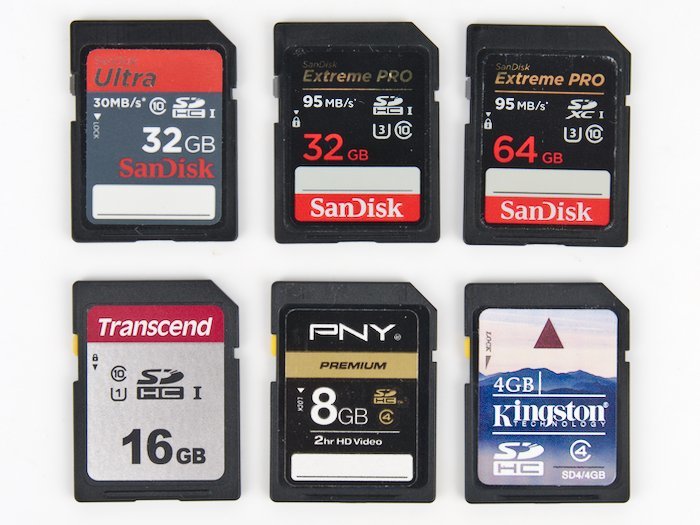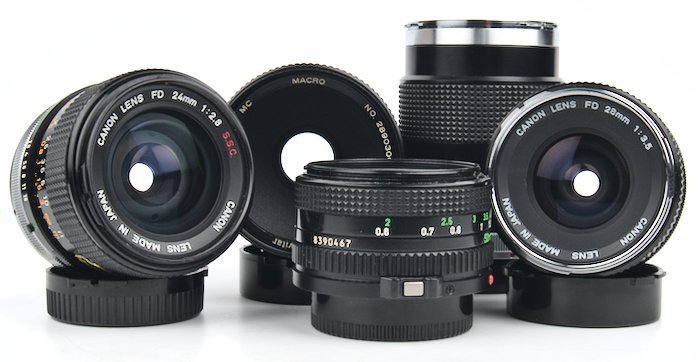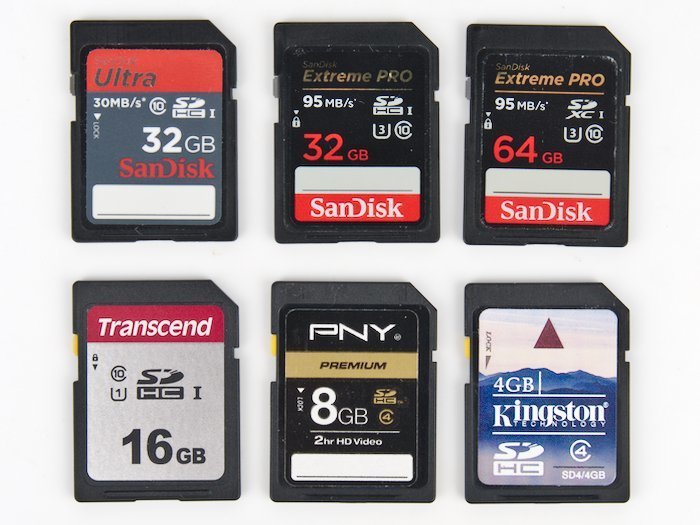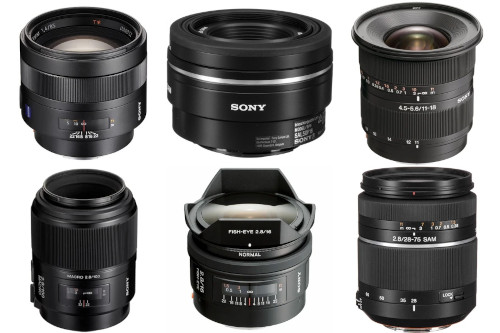
The 6 Best Lenses for the Sony A390
- Nathaniel Stephan
- Sony a390
- April 10, 2020
Table of Contents
The Sony A390 is an awesome Single Lens Translucent camera. If you do not own a lens or are wanting for a new lens, this page will talk about the best 6 lenses for your Sony SLT-A390.
Affiliate Advertising Disclosure
Outside the Shot is a participant in the Amazon Services LLC Associates Program, an affiliate advertising program designed to provide a means for sites to earn advertising fees by advertising and linking to Amazon.com.
As an eBay Partner, I may be compensated if you make a purchase. I also participate in affiliate advertising programs with KEH and Adorama. More can be found on the Affiliate Disclosure page.
Standard Primes
Sony 50mm f/1.8 SAM DT
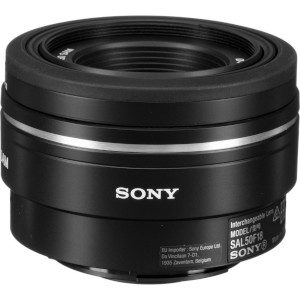
- Outstanding optics.
- Small and light weight.
- Can be difficult to find new.
- Smooth Autofocus Motor (SAM)
- Circular aperture.
See current price and more information on:
A fantastic combo of very compact size and lightweight. Quiet and smooth autofocus is delivered from a built-in autofocus motor..
The rounded aperture blades allow you to stop down by 2-stops and still have close to a perfectly circular aperture. The result is gorgeous bokeh and greater freedom in controlling your depth of field.
Minolta Maxxum AF 50mm f/1.7
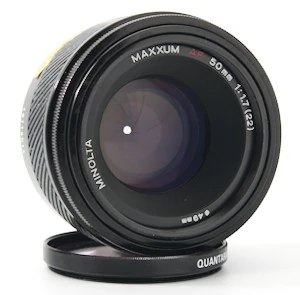
- Built-in lens hood.
- Amazing value.
- Light and compact.
- Widely available used.
- Coupled autofocus.
See current price and more information on:
This design was released by Minolta along with the unveiling of the A-mount. On account of the age of the lens, the autofocus is controlled by a motor built into the A390 camera body.
Autofocus that is coupled can be a little noisy and slow. In the event that that’s not a problem for you the image quality is outstanding. {The bokeh is pleasing and you’ll end up getting a classic rendering|You will end up getting pleasant bokeh and a classic rendering.
Another big benefit of the lens is the price. It is drastically cheaper than the Sony 50mm f/1.8 and additionally might be the lowest priced lens listed.
Sony 50mm f/1.4
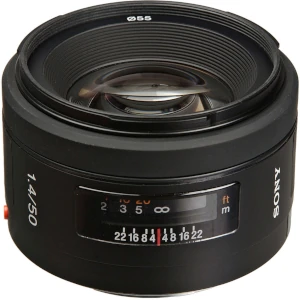
- Outstanding optics.
- Optical multi-coatings.
- Circular aperture.
- 55mm filter threads.
See current price and more information on:
A little bit faster than the Sony f/1.8, however that can definitely be important when you are working without much light. That as expected comes at a larger cost.
It is still a light and compact lens that works comfortably on the A390 and will fit into nearly every camera bag.
A slightly less expensive solution is the Minolta AF 50mm f/1.4. Bear in mind that they can be very hard to get in usable condition. The lens also was constructed with physically coupled autofocus, which is worse than lenses that have built-in autofocus motors}.
Portrait & Telephoto Lens
Sony 85mm f/1.4 ZA
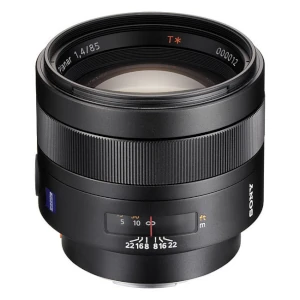
- Incredible bokeh.
- Excellent value used.
- T* coating to reduce flare and increase contrast.
- Astonishingly sharp wide open.
See current price and more information on:
Sony wanted to show off what the A-mount can do with this lens. Zeiss built this lens. The ZA (Zeiss Alpha) indicates that Zeiss created the lens exclusively for the A-mount.
This lens is incredible. Corner-to-corner sharpness with spectacular color that produces incredible portraits.
A potential downside is that it is a bit heavy thanks to being built like a tank and it can feel slow to autofocus at times. Take into account, that you’ll come across similar issues with any f/1.4 85mm lens.
Minolta Maxxum AF 85mm f/1.4
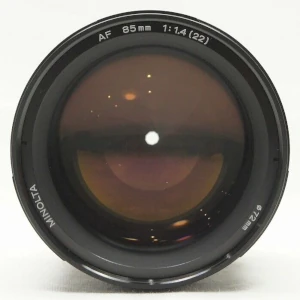
- Possible to find a good used deal.
- Superb image quality.
- Uses autofocus coupler.
- Double-Gauss design.
See current price and more information on:
This lens falls in the middle of the price range of the other two lenses. Locating a used lens in usable condition can be hard because of a small available supply.
The lens does have autofocus, but it uses a mechanical coupler and is driven by an in-camera body motor. This means that the lens will be somewhat noisy and slow to autofocus.
A Double-Gauss design is older and only uses six elements. That is not a negative as the lens has a unique appearance that cannot be produced with a modern day lens.
Sony A390 Zoom Lenses
Sony 28-75mm f/2.8
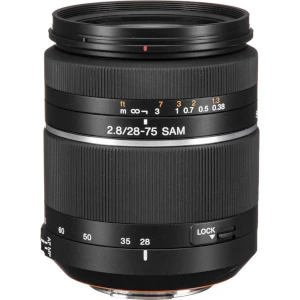
- Very usable zoom range.
- Great value used.
- Constant aperture.
- Smooth Autofocus Motor (SAM).
See current price and more information on:
If you want to shoot indoor shooting, night events, travel, and family photos, this is a fantastic fast zoom for that. It’s a well constructed lens with fairly quiet autofocus.
The lens often gets compared to the excellent Zeiss 24-70mm lens, but it’s about 1/2 the weight and less expensive. Both produce professional images.
Sony 55-200mm f/4-5.6 SAM DT
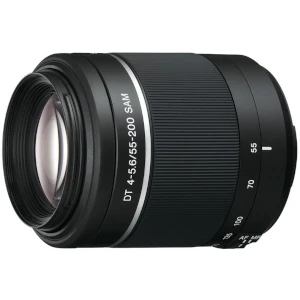
- Telephoto zoom range.
- Great for portrait or wildlife photography.
- Smooth Autofocus Motor (SAM).
- Inexpensive.
See current price and more information on:
A cheaper selection that can still produce very good results. It is not a pro lens, accordingly so long as you do not need high end technology, it is an excellent lens.
As a mid-range telephoto zoom, it has a very good range for taking pictures of wildlife, children outdoors, and sports.
Picture sharpness is very good and the autofocus is snappy. The lens is made out of plastic, which aids in cutting down on weight.
Sony 75-300mm f/4.5-5.6
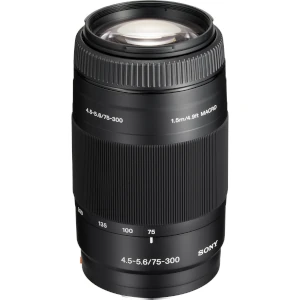
- Super telephoto zoom lens.
- Great for portrait or wildlife photography.
- 2.81 inches in diameter and 4.81 inches long.
- 55mm filter threads.
See current price and more information on:
This is a borderline super-telephoto lens due to the large zoom range. It’s an outstanding inexpensive solution for any time you want a lots of reach.
The lens is 2.8 inches (7.1 cm) in diameter, 4.8 inches (12.2 cm) long, and comes in at 1 pound 2 ounces (510g). While not light by any means, many professional telephotos are several times that weight.
For a bit better overall performance take a look at the Sony 70-300mm f/4.5-5.6 SSM ED G-Series, but unfortunately expect to pay around twice the price.
Wide Angle Lens
Sony DT 11-18mm f/4.5-5.6
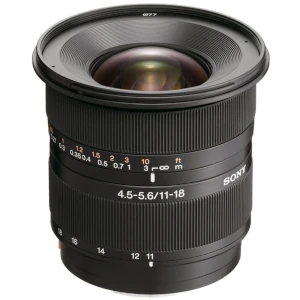
- Has a aspherical lens elements.
- Optical multi-coatings.
- Great value when purchased used.
- Circular aperture.
See current price and more information on:
Amazing quality for the money if you want to shoot great wide images that a kit zoom cannot capture. Distortion, especially of vertical lines is low or non-apparent unless you are intentionally trying to get an exaggerated perspective.
As well as being very good at capturing breathtaking landscapes, it is an ideal lens to travel with. The angle of view is wide enough so that when you see something you’ll be able to get everything you see into the Sony A390’s frame.
Sony 20mm f/2.8
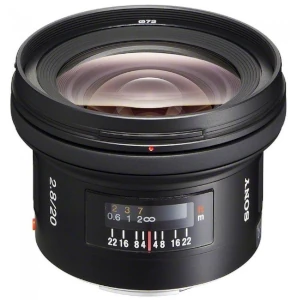
- Great for landscapes and architecture.
- Coated optics for clarity and definition.
- Rear focusing system for fast autofocus response.
- 72mm filter threads.
See current price and more information on:
It is a well engineered lens that does a good job of minimizing distortion. In addition, an enormous amount of energy has been put into reducing flane and internal reflections.
The result is an outstanding lens that is suitable for landscape, astrophotography, and architecture photography. The rear focusing system means the front element will not rotate so you will not have any difficulties using a polarizer or any other filter.
Tokina AT-X 11-16mm f/2.8 DX II
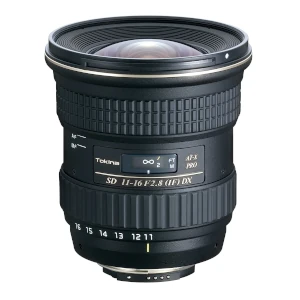
- Wide angle zoom lens.
- Hardened Alumite finish.
- Advanced optical coatings.
- All metallic moving parts.
- Designed for APS-C Sensors.
See current price and more information on:
It does not have tremendously fast autofocus, but the manual/auto focus clutch helps make it an excellent pick for manual focusing. A push or pull of the focus ring will switch the lens from MF to AF or vice versa.
The Tokina is faster when compared to the Sony 11-18mm, which will not be a huge deal for architecture or landscape photography. Where you will see something different is with astrophotography. That is a situation where you will want to take advantage of the 1-to-2 stop advantage the Tokina supplies.
Fisheye
Sony 16mm f/2.8 Fisheye
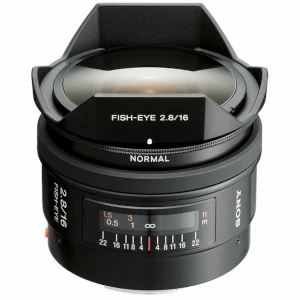
- Sharp corner-to-corner.
- 4 built-in filters: Normal, 056, B12, A12.
- 8 inch minimum focus distance.
- Aspherical and Extra-low Dispersion elements.
See current price and more information on:
Having built-in filters is a very good addition due to the fact the lens has a petal-style hood which prevents a lens filter from being attached to the front of the lens.
- 056 - Accented contrast for black and white photos.
- B12 - Correct color by eliminating red tones.
- A12 - Correct color by eliminating blue tones.
This lens has nearly everything you could require from a fisheye. You will obtain corner-to-corner sharpness without vignetting while still getting exaggerated distortion.
Rokinon 8mm f/3.5 Fisheye
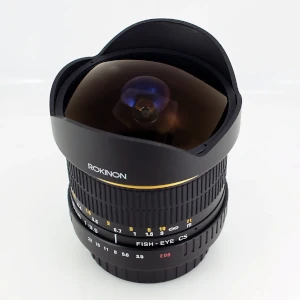
- Internal focus.
- 180 degree angle of view.
- Manual focus.
- Minimum focusing distance of 12 inches (0.3m).
- Designed for APS-C sensors.
See current price and more information on:
The lens has a spherical front element which means lens filters cannot be used. It has a snap-on petal-type hood that you will want to make sure that it is included if you opt for a pre-owned lens.
Construction quality will be a little hit or miss as a consequence of the low price. Most people are very pleased with the images they get. It’s still important to extensively test the lens when you obtain it to be certain that the lens is not a bad copy.
Macro Lens
Sony 100mm f/2.8 Macro
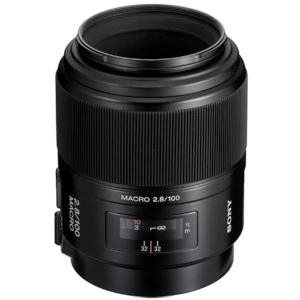
- 9 aperture blades.
- Focus range limiter.
- High contrast and resolution.
- 55mm filter threads.
See current price and more information on:
A perfect balance of working distance, weight, and cost for the Sony A390. The autofocus can be somewhat loud, but for shooting macro pictures, manual focus is easier than using AF.
For good results at 1x magnification the lens should be stopped down by at least 2 stops. Doing that will additionally give you a wider depth of field, which is crucial for macro photography.
Sony 50mm f/2.8 Macro
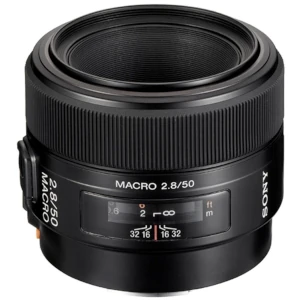
- 10.4 ounces (295g).
- Focus range limiter.
- Focus Hold button for full creative control.
- 55mm filter threads.
See current price and more information on:
The 50mm focal length is not that useful for 1:1 magnification due to how little working distance you will have. At that level of magnification, the front of the lens will be approximately 2 inches (5 cm) far from the subject.
This lens is ideal for copy work, close-up, and tabletop photography. It enables you to get closer to a subject than a standard 50mm lens, and that is excellent for nature photography when you need to fill the camera frame with a tiny subject, such as a flower.
Tamron AF 90mm f/2.8 Di SP A/M 1:1 Macro
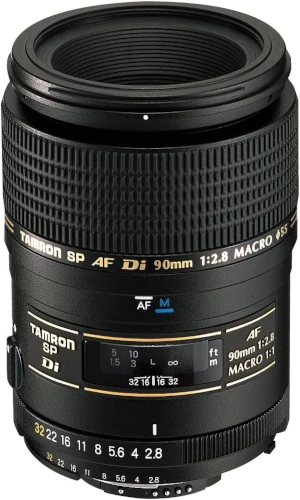
- Available in a variety of camera mounts.
- Improved resolution, chromatic correction, and optical coatings.
- Super Performance (SP)
- Focus clutch to switch between AF & MF.
See current price and more information on:
In addition to having autofocus, the focus ring feels great when manually focusing. Closed down two or more stops and you’ll get razor-sharp shots.
Also, be mindful when shopping for the lens as it is built in various lens mounts.
Used A-Mount Camera Lens Prices
Prices are frequently in flux. During the previous handful of years, participation in film photography has been climbing. Due to the fact that there are 35mm Minolta cameras that use the A-mount, some upward pressure is put on the price of lenses.
The A-mount also doesn’t hold a major market share. Due to this fact, a smaller number of third party options exist and the lenses manufactured by Sony are frequently on backorder.
To get the cheapest price on what you want, check prices on several sites. For used lenses, be prepared to buy when you come across a great deal as they will not be available for very long.
What Lens Mount Does the A390 Use?
The Sony A390 uses the Sony A-mount. It’s also the same as the Minolta A-mount. This is due to Sony purchasing Konica Minolta’s camera division in 2006.
The A-mount was developed by Minolta for the intro of interchangeable lens autofocus cameras in 1985. It’s still being supported by Sony to this day.
Standard Lens Cap Size
Generally 55mm, but honestly the filter sizes are inconsistent. Previous Minolta lenses tend to have 49mm filter threads.
There are several lenses that have filter threads bigger than 55mm. It’s not rare to see 72mm or 77mm filter threads. It would’ve been nice if Sony lenses needed only 2 or 3 different filter sizes.
